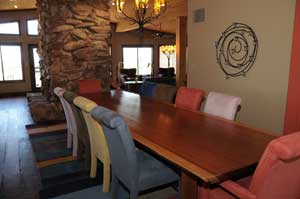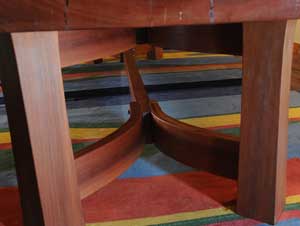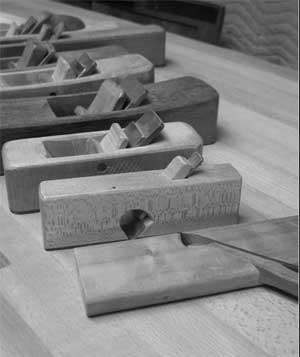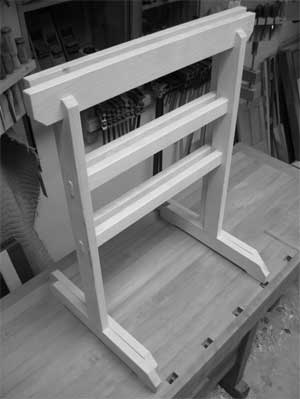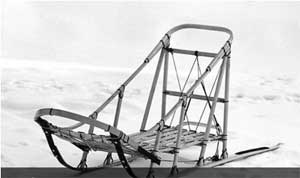
When David Fleming was living in Alaska in the 1970s and 1980s, he learned about woodworking as needed. “I was living out in the bush, 12 miles from the nearest small village of a couple hundred people, 300 miles from the road. You needed to build everything from dog sleds to furniture, whatever your living circumstances were.”
At the time, the Fairbanks library had a program in place to send Alaska residents, once a month, a box of books on a topic they requested. David requested any books about furniture making.”One of the first books they sent was James Krenov’s Cabinet Maker’s Notebook. “I was blown away,” David said. He placed his next request for “any more books by that guy.”
At one point, David came across an application for the fine furniture program which James Krenov had founded at the College of the Redwoods in California. “Lo and behold, I got in. The hallmarks of the school are attention to detail, craftsmanship, understanding of wood and understanding of the process at a high level. It was not at all what I was trying to do in Alaska, but I was open to it.”
Attending the school created a fundamental change in his approach to woodworking, David said, and “has guided me through the rest of my woodworking life since then.”
Upon return to Alaska, however, he made a small kitchen for a client in the Krenovian style, as well as a display case for a school, but otherwise did not find much call for the detail-oriented approach. David and his family moved to Arizona where, at first, he got a job in a cabinet shop. “I wanted to learn how to do things with the staple gun, to get things done in the real world,” he said.
“Krenov’s philosophy is that you used basic machines to do the grunt work, and then bring it into the bench room and work on the surfaces with hand tools,” David said. “In Alaska, when I learned on my own, it was basically pure grunt work: I didn’t have any power tools except a chainsaw.”
Now, he uses a combination of machine and hand tools, and “I’m happy I have the tools to do all the hard, physical work.”
He also has old hand tools, “because I like older stuff.” While not a collector per se, people will sometimes give him tools; he also finds some on his own. “I refurbish ’em and make ’em work, but they’re not the kind of planes a woodworking collector would be looking for. I use my wooden planes I made myself mostly, but I do occasionally get out a plane that’s more specialized.”
For instance, “Stanley made an old compass plane for cutting the inside and outside of circles. It’s useful once in a blue moon around here, but it’s great when you need it.”
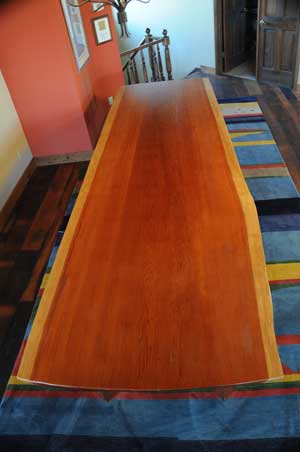
David hand cuts his dovetails and tries to do as much work as possible by hand. In terms of style, “With the everyday work I do, I try to bring as much as I can of the spirit of the College of the Redwoods to it, the spirit of craftsmanship. I’d have to call myself a Krenovian; most of my ideas about design evolved from my time at school there.”
His school connections also led him to what he considers one of his more interesting pieces, a 12′ x 4′ table made from a single slab of redwood. Some of David’s classmates from College of the Redwoods had secured permits to salvage pieces of redwood left in the Mendocino-area woods after logging operations a hundred years ago, and, when a Phoenix couple sourced one of those slabs of virgin, old growth timber for a table they wanted, the classmates referred them to David as a builder. “It was a pretty cool table,” he said.
For the most part, David said, “I tend to like domestic woods. If the world only had ash and walnut in it, I’d be perfectly happy.” He will use exotics if called for in a client piece, but he’s also “not a big fan of figured wood, unless it’s in very small doses. I like it to be tempered by a lot of straight grain, riftsawn ash or walnut.”
For him, the most enjoyable aspect of woodworking is teaching. David has been giving classes since 1994: some project-oriented, some skill-oriented, with a maximum of three students per class. For instance, he teaches a class on making a mortise-and-tenon joinery shop stand in a style known for coming out of the College of the Redwoods.
“I’m doing at least as much teaching as I’m building things,” he said. “I’m trying to teach the approach to craft and craftsmanship that I learned at the College of the Redwoods.”
